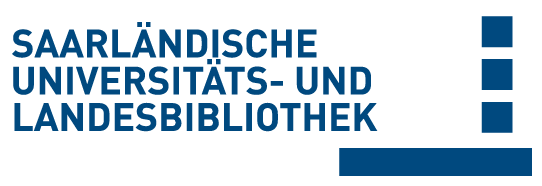Please use this identifier to cite or link to this item:
doi:10.22028/D291-23053 | Title: | Magnetic tweezers to investigate the role of mechanics during collective cell migration |
| Other Titles: | Magnetische Pinzette zur Erforschung mechanischer Eigenschaften bei kollektiver Zellmigration |
| Author(s): | Schulze, Ulrike |
| Language: | English |
| Year of Publication: | 2014 |
| SWD key words: | Biophysik Biomechanik Zellmigration Mechanische Eigenschaft |
| Free key words: | magnetische Pinzette Gewebemechanik magnetic tweezers tissue mechanics |
| DDC notations: | 500 Science |
| Publikation type: | Dissertation |
| Abstract: | The aim of this thesis was to measure mechanical properties of cells in vivo and to
investigate the role of mechanical forces during collective cell migration in developing
zebrafish embryos by use of a magnetic tweezer set-up. The lateral line primordium
(LLP) was used as a model for studying collective cell migration. The LLP consists of
a group of collectively migrating cells, forming a tissue that has a characteristic cell
organization: a mesenchymal-like leading region at the tip of the tissue and epithelial
cell clusters at the rear.
Previous experiments have shown that intercellular forces may play a key role in cell-cell
coordination within the migrating collective. Furthermore, internal tissue organization
into different cell types appears to be necessary for cell migration of the LLP. For these
reasons we used our magnetic tweezer to apply defined mechanical forces on the LLP
and captured the reaction of the migrating tissue. Additionally, we asked whether the
distinct cellular organization of the LLP correlated with a change in material properties
of the cells, a general important question that has not yet been addressed in vivo. We
found a pronounced gradient in several viscoelastic parameters along the axis of the
LLP. Furthermore, we could link this graded change in material properties to a key cell
signaling molecule, FGF. Our finding is likely to have an impact on the coordination of
collective cell migration by mechanical signals. Das Ziel dieser Doktorarbeit ist, Messungen mechanischer Eigenschaften an Zellen in vivo durchzuführen und die Rolle mechanischer Kräfte bei kollektiver Zellmigration zu erforschen. Aus diesm Grund war es nötig eine magnetischen Pinzette zur Nutzung in Zebrafischembryonen zu konstruieren. Das Seitenlinien Primordium (SLP) wurde als Modell für kollektive Zellmigration benutzt. Es besteht aus kollektiv migrierenden Zellen, welche ein Gewebe formen und eine charakteristische Zellorganisation aufweisen: die Spitze des SLP besteht aus Mesenchymzellen, während Epihelzellen im Rückteil des SLP Zellcluster bilden. Frühere Versuche haben gezeigt, dass interzelluläre Kräfte für Zell-Zell Kommunikation von kollektiv migrierenden Zellen eine wichtige Rolle spielen. Für die Migration des SLP ist zusätzlich die Präsenz verschiedener Zelltypen notwendig. Aus diesem Grund wollten wir mechanische Kräfte auf das SLP übertragen und die Reaktion der Zellen observieren. Außerdem wollten wir messen, ob die zelluläre Organisation des SLP mit Aenderungen der Materialeigenschaften der Zellen korreliert. In vitro Experimente haben gezeigt dass diese Eigenschaften bei verschiedenen Zelltypen teilweise dramatisch variieren. Es ist jedoch nicht bekannt, ob dies auch auf Zellen in Embryos zutrifft. Unsere Messungen ergaben die Existenz von Gradienten der viskoelastischen Parameter entlang der Gewebeachse, welche Einfluss auf die Koordination von Zellmigration durch mechanische Signale haben könnte. |
| Link to this record: | urn:nbn:de:bsz:291-scidok-61117 hdl:20.500.11880/23109 http://dx.doi.org/10.22028/D291-23053 |
| Advisor: | Ott, Albrecht |
| Date of oral examination: | 10-Feb-2015 |
| Date of registration: | 15-May-2015 |
| Faculty: | NT - Naturwissenschaftlich- Technische Fakultät |
| Department: | NT - Physik |
| Former Department: | bis SS 2016: Fachrichtung 7.2 - Experimentalphysik |
| Collections: | SciDok - Der Wissenschaftsserver der Universität des Saarlandes |
Files for this record:
| File | Description | Size | Format | |
|---|---|---|---|---|
| USchulze_Dissertation.pdf | Dissertation | 15,75 MB | Adobe PDF | View/Open |
Items in SciDok are protected by copyright, with all rights reserved, unless otherwise indicated.

